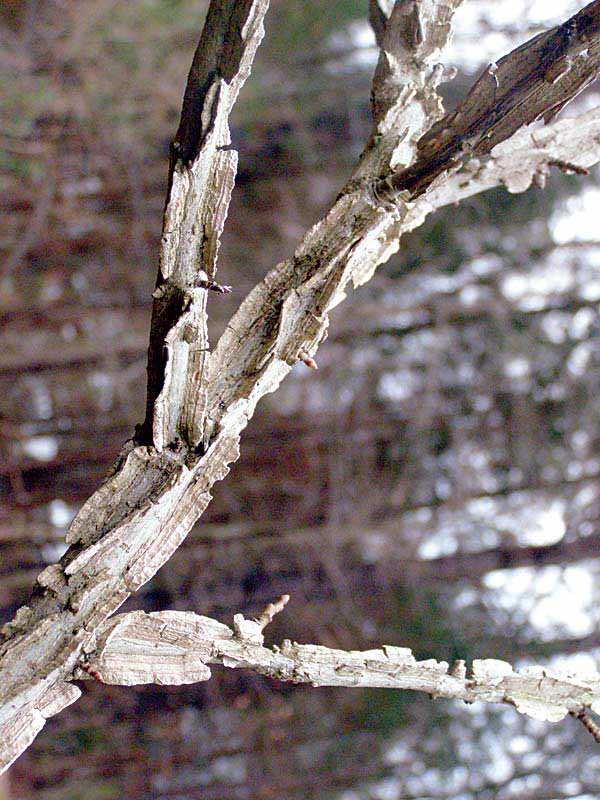Experience a winter walk in the woods

Flat corky Winged Elm branch. Photo by Ken Moore
By Ken Moore
Flora Columnist
I relish the winter woods; there is much to see, many subtleties of interest and beauty that are masked in the summer by dense foliage. The varied terrain of bare trees and the deafening silence of the winter woods are reasons enough to bundle up and become part of that scene. I find it very warming to simply snuggle in at the base of a big tree and linger long enough to hear wind and critter sounds interrupt the silence.
Having binoculars at hand is a great aid, not just for bird viewing but for bringing into focus the movements on the distant forest floor and observing identifying characteristics of tree branches high above. A little quiet time in any of our local forests will most likely reward you with the sounds and sights of woodpeckers, nuthatches and Brown Creepers moving high and low along the tree trunks.
If the birds are scarce, you can enjoy looking more attentively at the trees. Two of my favorite winter trees are the Winged Elm, Ulmus alata, and the sweetgum, Liquidambar styraciflua. Most folks easily identify the sweetgum in the winter if they see it ornamented with hundreds of those half-dollar-size spiked balls hanging from the tree branches. Many folks frown on sweetgums in their own landscape because those spiked seed balls litter their drives and lawns. However, those balls, aggregates of seed capsules, provide a nutritious food source attracting at least a dozen bird species, particularly the little chickadees.
Another identifying characteristic of the sweetgum is the irregular corky growth occurring along all sides of the branches. In contrast, the other corky-branched tree, the Winged Elm, generally has the corky growth in a flat plain along only two sides of the branch. The branches of some of these two trees are so heavily laden with corky growth that the effect is quite dramatic in the winter landscape. Be aware that not all of either tree species have corky branches. Many have normal-appearing branches, so to tell them apart you will want to observe the finer, lacy branch structure of the Elm contrasted with the coarse, thicker branches of sweetgum. A really beautiful aspect of the Winged Elm is the silhouette against the sky of the elm’s swelling flower buds, becoming very evident now in the dead of winter.
Most likely the elms will be in full flower by the middle of next month, a sure sign that spring is on the way.
This coming Saturday afternoon, January 19, rain, snow or shine, I’m going to enjoy the winter woods of the Adams Tract. Though this is not an officially sponsored walk, you are welcome to join me at 1 p.m. beginning at the trail head kiosk in the lower part of Carrboro’s Wilson Park. Don’t forget your binoculars. And above all else, if you didn’t get out for a New Year’s Day walk, it’s not too late to treat yourself to a weekly walk in the woods.
Email Ken Moore at flora@carrborocitizen.com. Find previous Ken Moore Citizen columns at The Annotated Flora (carrborocitizen.com/flora).


Comments are closed.